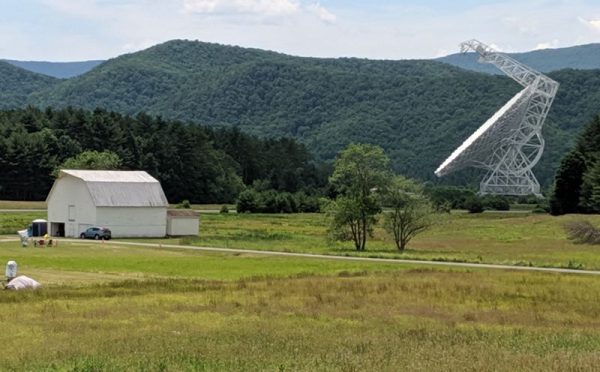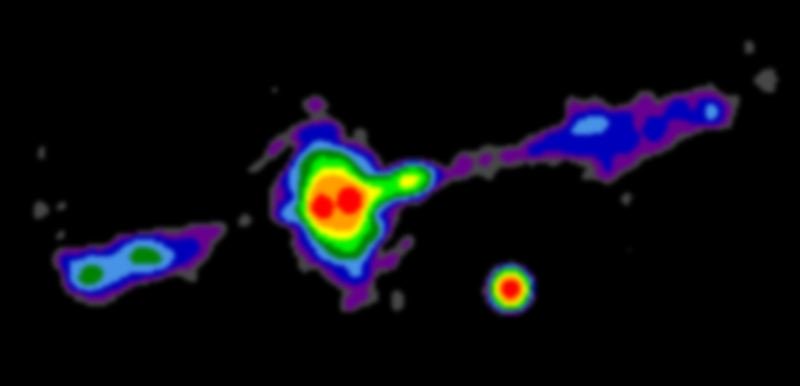Planetarium tunes into decades of radio astronomy – Pamplin Media Group
Presentation highlights multitude of discoveries from growing number, size of telescopes through the years
If You Go
What: “Radio Astronomy Discoveries and Their Immense Instruments” planetarium show
When: 6 p.m. and 7:15 p.m. Tuesday Feb. 4, and Friday, Feb. 7
Where: Mt. Hood Community College Sky Theater Planetarium, 26000 S.E. Stark St.
Admission: $5 for adults; $2 for MHCC students (with valid ID) and children 17 and younger.
For more information: visit mhcc.edu/planetarium.
 The study of radio astronomy is based on something of a paradox: using rather massive equipment to detect extremely faint signals from space.
The study of radio astronomy is based on something of a paradox: using rather massive equipment to detect extremely faint signals from space.
Regardless of that incongruity, Pat Hanrahan, planetarium director at Mt. Hood Community College, said these instruments are making discoveries that are rewriting our understanding in many areas of astronomy.
Hanrahan will explore what he describes as the “relatively recent field” of radio astronomy in a presentation called “Radio Astronomy Discoveries and Their Immense Instruments” on Tuesday Feb. 4, and Friday, Feb. 7, at the Mt. Hood Community College Sky Theater Planetarium in Gresham. He will also show the current night sky with Orion still ruling over the winter sky along with his neighbors.
Hanrahan took some time to share his observations with The Outlook:
THE OUTLOOK: What inspired this presentation?
PAT HANRAHAN: I have been fascinated with radio astronomy for a long time as I’ve known about some of their large dishes (such as the huge Arecibo dish in Puerto Rico) since I was in grade school. And then in 2018, I was selected to be a member in the “Astronomy in Chile Educator Ambassador Program,” where a group of us had the opportunity to visit some of the observatories in Chile. This included one of the most advanced radio telescopes arrays in the world (ALMA). These dishes are making discoveries that are completely rewriting textbooks on how new stars are formed.
OUTLOOK: When did radio astronomy come into play/prominence?
HANRAHAN: In 1932, radio astronomy was pioneered by Karl Jansky, who was working for Bell Laboratories to find sources of static for radio communications. One of those sources was found to come from the constellation Sagittarius. He didn’t know what that source was at the time, but today we know that he found the location of the giant black hole in the center of our galaxy. However, for about a decade there was little interest in radio astronomy and it wasn’t until after World War II that it really got started. Many early research projects used technology that was developed for radar. Early radio telescopes were not able to image the sky, but they could detect signals coming from space. And their signals didn’t seem to be coming from the same place as the stars. By the 1960s, they discovered a strange type of star called a pulsar. With its regular signals, it almost seemed as if they were coming from another civilization. But they soon figured out that they were coming from a very compact spinning star.
OUTLOOK: When did radio telescopes start being built and used?
HANRAHAN: After the pioneering work of Karl Jansky and others, it wasn’t until the 1950s that a number of radio telescopes were being built (including the) various radio telescopes at Green Bank (W.Va. that) got their start in the late 1950s.
Some other notable sites include:
– The Arecibo Observatory in Puerto Rico: is able to both send and receive radio waves. Using it in radar mode it can even image nearby asteroids.
– The Very Large Array in New Mexico: One of the advanced array of many radio telescopes that can work together to image star formation, galaxy collisions and many other processes.
– The Atacama Large Millimeter Array of radio telescopes on top of a desert plain at an elevation of over 16,000 feet above sea level. This is the most advanced array of radio telescopes in the world.
For exploring the very short radio wavelengths (where they can get the best resolution), elevation in one of the most important factors as well as climate. Atmospheric water can absorb many of the signals that they wish to observe.
Radio signal interference (is) getting to be a larger and larger problem as radar is becoming more and more important for self-driving cars and as more and more satellites get launched into space.
 OUTLOOK: How has the field evolved since the mid-20th century?
OUTLOOK: How has the field evolved since the mid-20th century?
HANRAHAN: Radio telescopes arrays are much more common and more powerful as a result. Recently they have linked radio telescopes from a number of locations around the world and even got our first-ever image of the “event horizon” of a black hole. By linking more radio telescopes together as an array they essentially can have them act as one giant telescope. They are now able to see much finer detail of deep space processes (such as how gas and dust evolve in new solar systems) than was possible before.
OUTLOOK: Tell us about Orion and how it fits in with the radio astronomy theme?
HANRAHAN: There are a number of faint compact radio sources within the Orion constellation. And many of these are associated with new star formation. I will be talking a lot more about Orion and its famous star named Betelgeuse in my April planetarium show. Betelgeuse is attracting a lot of attention as it has significantly dimmed over the past few months. Some feel that this could be the sign that the star is about to explode in a supernova. That would be a spectacular change to our winter sky, but how probable is this outcome?
You count on us to stay informed and we depend on you to fund our efforts. Quality local journalism takes time and money. Please support us to protect the future of community journalism.








